A complete collection of "arowana" culture with the status of king of the aquarium
In the five thousand years of history of Chinese origin, "dragon" is the symbol of the spirit of the Chinese nation. It bears strength, hope and Chinese people's longing for a better life. Our nation has called itself "the descendant of the dragon" since ancient times. Dragon culture is an important origin and component of Chinese culture, which has a far-reaching impact on the development of Chinese culture. This influence has penetrated into all aspects of Chinese society.
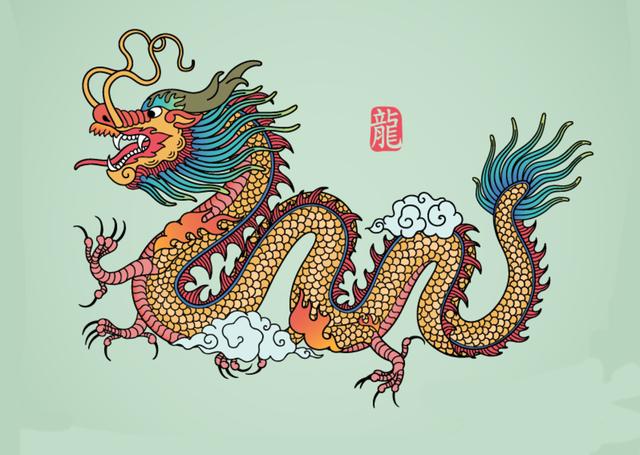
People worship the dragon in totem style, and do everything possible to make the image of the dragon concrete, alive, people constantly guess, keep looking, and finally create lion heads, antlers, fish scales, chicken feet. A collection of. If you still think that its image is not clear enough, then when you first see the prehistoric creatures growing in the primitive tropical lakes of Southeast Asia, you may be amazed by its huge, shining scales and its majesty. At this time, you must blurt it out-that is the legendary dragon. This prehistoric creature has become the object of human breeding since it was discovered by human beings. Locals all say that as long as they have it at home, it will bring good luck to themselves and their families, and will lead to more happiness and longevity, prosperity, disaster avoidance and success. Moreover, the local people gave it a loud and appropriate name-dragon fish!

Because of this, the dragon fish and its name have become popular all over the world where Chinese people have traveled. "Dragon Fish Fever" is also quietly rising in the global aquarium community. Singapore, Indonesia, China and other countries have successively appeared "dragon fish websites" of different sizes. Especially in China, the world's largest and most active arowana theme community-the top of the arowana. The arowana top forum not only shows people the excellent arowana of enthusiasts all over the world, but more importantly, it provides a platform for enthusiasts to exchange breeding techniques and experiences, so that more friends not only know about arowana, know arowana, can raise arowana, so that arowana top really become the preferred comprehensive interactive platform for global arowana lovers to learn and exchange!
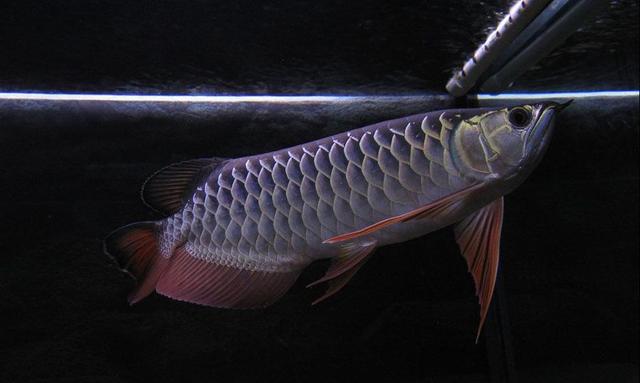
Therefore, the dragon fish encyclopedia will take you close to this mysterious prehistoric fish, share the fun of watching "dragon" with friends who love "dragon", and exchange the experience of raising "dragon". Popularize the basic knowledge of arowana and the way of feeding!
An overview of arowana
Arowana, also known as Longtuzhu fish (Hong Kong, Macao), ribbon fish (Taiwan), silverboat fish and silver swordfish (Japan), is called AROWANA (local Chinese pronounced "Arrovana") in the country of origin. It means "long tongue" in Spanish, and the scientific name of arowana is "Scleropages". It means tongue, choking shape, and its size is large and long. The trunk is covered with huge, neatly arranged, shining scales, with a large mouth and two tentacles at the corners of the lips, swimming in a leisurely manner, like a mythical "dragon", hence the name "dragon fish". It still retains the body characteristics of ancient times, known as "fish living fossils", with great breeding and ornamental value.

Arowana is a large freshwater fish that first appeared on Earth during the Carboniferous Period, began swimming in freshwater around the Jurassic Period, and gradually diverged from a common ancestor into two species, namely, Australia Arowana and Asian Arowana. Some Japanese scientists believe that Asian arowana diverged from their closest relative, the Australia arowana (pearl arowana), during the Cretaceous. It is now found on every continent except North America. In Asia, mainly in Southeast Asia, there is only one species, namely Asian arowana; in Australia, there are two species, namely pearl arowana and star arowana; in Africa, there is also one species, namely African arowana; and there are two species in Latin America, namely silver arowana and black dragon.
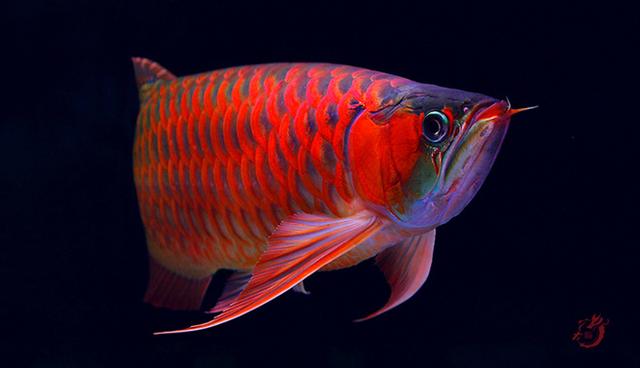
According to relevant records, arowana was first discovered and named by American ichthyologist Dr. Vandelli in the Amazon River Basin in South America in 1829. In 1933, the French ichthyologist Dr. Peiru Gao Lan discovered the red arowana in Saigon, Vietnam. In 1966, French ichthyologist Bran and Patten discovered another species of arowana in Phnom Penh. After that, experts and scholars from some countries have found some species of arowana in Vietnam, Malaysia, Indonesia and Thailand. In order to distinguish, according to the body surface and other characteristics of arowana, scholars named arowana, orange-red dragon, golden arowana, platinum arowana, green arowana and silver arowana and so on.
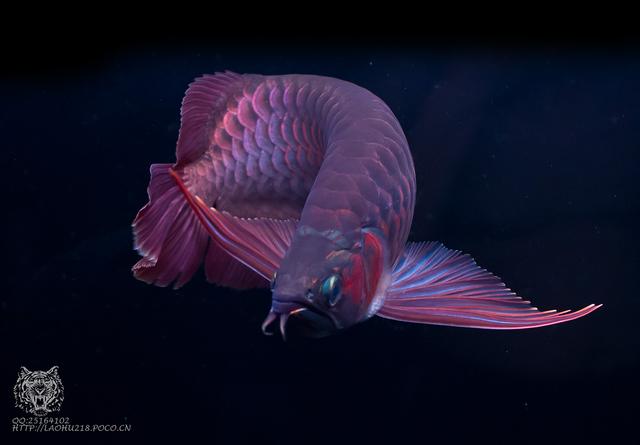
The introduction of arowana into the aquarium as an ornamental fish began in the late 1950s and gradually became popular all over the world in the 1980s. Since the arowana became popular in the world, the demand has soared, so that the arowana, especially the Asian arowana, has been frenzied by hunters in its habitat, and the number of wild arowana has declined sharply. Among them, the golden arowana and red dragon fish, especially those produced in Malaysia, were on the verge of extinction in the late 1980s. To this end, the Washington Convention (a contract made by the United Nations for the protection of wildlife) began to explicitly prohibit the fishing and sale of wild arowana, so as to protect wild arowana resources. In Indonesia, the main exporting country of arowana, the red arowana has been listed as a national treasure.
In order to meet the needs of enthusiasts, many scientists and technicians from the origin of wild red dragons in Asia began to carry out artificial breeding experiments of arowana, and made a breakthrough. Indonesia, Malaysia and Singapore have successfully bred the first and second generations of arowana in a semi-artificial way. In accordance with the requirements of the Washington Convention, the countries of origin of these arowana have formulated a set of good management methods for the export of reproductive forms, and have been strictly implemented. Wild red dragons protected by opponents (the first generation) are strictly managed and forbidden to be exported, but only their second generation, that is, with the third generation and below, can be sold to the outside world. The specific approach is for manufacturers to implant a special chip for wildlife identification in the juvenile fish of "F3" and then apply for registration with the Washington Convention. After accepting the application, the organization shall approve and register for the record and issue a "permit for sale". Only after having a "permit for sale" can the production enterprise legally carry out sales.
Today, arowana is sought after by enthusiasts, and the price of arowana once rose, not only because it is majestic, majestic, colorful, precious and rare, but also because it is often given infinite hope and meaning by its breeders. For example, many breeders raise them in prominent positions in the living room or office at home, hoping that arowana can bring good luck to their families and make their families prosperous; some enthusiasts put nine-tailed arowana in the same aquarium and give it the meaning of "nine dragons in the sky"; some enthusiasts mix arowana with Thai tiger fish, which is called dragon and tiger tank, which means dragon and tiger leap. In short, they all wish the host good luck, good luck, a prosperous family and a prosperous career.
In fact, among many countries, Chinese (including overseas Chinese) have the deepest feelings for arowana. "Dragon" is the symbol of the famous Chinese family, which has been deeply rooted in the hearts of all Chinese people for five thousand years, and has formed the most cohesive dragon culture, and its influence has long penetrated into all aspects of social life.
Today, people can only understand and appreciate the legendary dragon from mythological novels and art works, but in reality, the dragon fish can be close to it. For the Chinese who have always called themselves "descendants of the dragon", their feelings for the dragon fish are self-evident. It makes the name "dragon" in the name "dragon", and the shape is somewhat similar to the legendary "dragon", so that after the dragon fish was introduced into our country, the breeding boom heated up rapidly.
The structure of arowana
Arowana naming
Arowana, large freshwater fish, origin is called AROWANA, its scientific name "SCLEROPAGES" means tongue, hard pharynx, according to the taxonomic arowana belongs to the OSTEOGLOSSIDAE family (Osteohyoideae, also known as Osteopharyngidae).
Arowana was first discovered and named by American ichthyologist Dr. Vandell in the Amazon Basin of South America in 1829. In fact, arowana existed as early as the ancient Carboniferous, known as "fish living fossils". It was introduced into the aquarium as an ornamental fish in the United States in the late 1950s and became popular all over the world.
In China, "SCLEROPAGES" is called "dragon fish" because the dragon fish is shining all over its body, with large scales, a large mouth and two tentacles at the corners of its lips, which is exactly like the "dragon" in Chinese mythology, hence its name.
Introduction to arowana
The dragon fish has a strong body, bright colors, elegant and elegant posture, elegant and magnificent, with king demeanor, and is regarded as a symbol of status and status in many parts of the world. Arowana is produced in four places: Asia, South America, Australia and Africa. And we generally raise the most common red arowana and goldfish are Asian arowana, the main producing areas are Indonesia and Malaysia.
The basic characteristics of arowana are: large size, length is generally in 60-80cm, its fish scales sparkling gold. The golden scales account for about 1 / 2 of the whole fish body, and some Asian arowana show horseshoe prints on the scales after hybridization. On the other hand, the golden color of the golden dragon crosses the fifth row of scales, and there are many neatly arranged scales scattered in the dorsal fin, anal fin and caudal fin base. The beard of the arowana is relatively complete and its eyeballs are very bright.
The lines on the surface of its double gills are varied, and some arowana, such as the red-tailed golden dragon, have special red patches on the Gill cover. The life span of arowana is very long, and it can live for decades.
Arowana is a carnivorous fish, from juvenile to adult fish, must be fed with animal bait, to feed live food is the best, it is best not to feed a single bait, should develop a nutritious menu to ensure its nutritional balance. The arowana can adapt to a water temperature of 24-29 ℃, and can even adapt to a temperature of 22-31 ℃ if the fish only adapt well. However, arowana, like other ornamental fish, avoid sharp changes in water temperature.
Arowana is an ancient and endangered species, whose breeding and production is restricted by the Washington Convention (CITES). The arowana produced in the registered arowana fishing grounds in Malaysia and Singapore has a pedigree coding chip.
What we usually call arowana and arowana we raise mainly refers to Asian arowana!
Which species of arowana is the best?
If you have to ask which species of arowana is the best, then as far as the species are concerned, red arowana and golden arowana are generally liked, and the price is more expensive. Among the red arowana, chili red arowana is the best. The red arowana is similar to the golden arowana in shape, with a pointed head and hair color starting from the operculum. The hair color time, speed and color depth of the Gill cover determine the hair color state of the whole fish body, so when selecting the red arowana, the first thing to pay attention to is the Gill cover part. Of course, the shape and state of the arowana should also be paid attention to.
Golden arowana is the most popular arowana, raising a six-row all-bright golden arowana is everyone's pursuit, but many people pay too much attention to climbing back and ignore the performance of bead scales. Depending on the quality of a golden arowana, bead scales are also very important. Compared with a fish with bright pearl scales and low climbing back, and another fish with half bright pearl scales and six rows of all bright fish, it is a wise choice to choose the fish with all bright pearl scales, and the development of the fish in the later stage will definitely not be bad; if you choose six rows of all bright fish, it is very likely that anti-scaling will occur in the later stage.
In addition to red arowana and goldfish, the answer to which species of arowana is the best is green arowana, which is cheaper. Compared with other kinds of arowana, it is much smaller and its head is round and small, while the yellow-tailed golden dragon has a light yellow tail when it is young, and the price is a little higher.
There is another species that can participate in the selection of which species of arowana is the best, and that is silver arowana. Silver arowana has a variant, the whole body is snow white, for snow dragon, because its individual is relatively rare, so it is more precious.
For everyone, the answer to which species of arowana is the best is also different, depending on personal preferences, so there is no very accurate answer to prove which species of arowana is the best, and there is no best only better, usually raised in place, it is not difficult to raise a high-quality arowana.
How long can the dragon fish live?
Arowana, which lived at the same time as dinosaurs hundreds of millions of years ago, still retains the body characteristics of ancient times, so it is known as "fish living fossils," and now this ancient species has become a new favorite in the aquarium. The arowana is precious, but it is not "hypocritical". It is only guaranteed that it can live well with good water quality, adequate oxygen, appropriate temperature and food, so how big can the arowana grow and how long can the arowana live?
It is recorded in the aquarium that wild arowana is said to live for hundreds of years. In theory, the lifespan of animals is generally eight to ten times that of maturity, so the theoretical lifespan of arowana should be between 50 and 60 years. How long can the arowana raised in the aquarium live?
It is said that arowana is a kind of fish species that is easy to raise, as long as we usually pay attention to changing water regularly, maintaining temperature, regular balanced feeding and interaction with arowana to form a "tacit understanding", there is no need to deliberately take care of arowana raised in the aquarium, its life is not comparable to that of ordinary ornamental fish. The place that attracts arowana players to raise arowana is the longevity of arowana. So how long can the dragon fish live? How long the arowana can live is closely related to what factors?
Subjectively, the lifespan of a fish is closely related to its body size and mature age. The older the fish are, the later the mature age is, and the longer the life span is. However, the lifespan of fish is also different. the lifespan of most fish is between two and 20 years, of which 60% of fish live between five and twenty years, and very few fish can live for more than 30 years. Arowana is a large tropical fish, so its life span is longer. Golden arowana can live as long as several decades, red arowana can live as long as 40 to 50 years, while silver arowana can live only 20 years.
How long the arowana can live is also affected by objective factors such as dragon tank environment, arowana disease, arowana hybridization and other unexpected conditions.
Arowana partial eclipse
When raising arowana, many players will find that arowana is only interested in certain foods and completely ignore other foods, which is the partial eclipse of arowana.
In the process of players' dragon fish culture, barley worms, centipedes and shrimp are chosen as the food for the dragon fish. Some players who have plenty of time will prepare frozen fish and shrimp for the dragon fish, but some players only provide the dragon fish with a single barley worm as bait. In this way, it is easier to cause the phenomenon of partial eating of the dragon fish. So, how to feed the arowana to prevent the partial eclipse of the arowana?
How to prevent partial eclipse of arowana:
When feeding arowana, the main bait and auxiliary bait should be separated, and it is recommended to feed mainly with fish and shrimp and supplemented by other insects, such as barley worms, centipedes, frogs and so on. This can not only prevent the partial eclipse of arowana, but also ensure the daily nutritional balance of arowana.
In addition, arowana should be exercised in daily life to maintain a strong appetite.
1. Create stable and good water quality conditions for arowana.
2. Keep the feeding environment of the fish tank stable
3. Adding appropriate amount of mixed culture objects can stimulate the appetite of arowana.
4. Properly reduce the amount of feeding and improve the appetite of arowana.
5. Adjust the types of food regularly.
How to correct the partial eclipse of dragon fish:
When it is found that the arowana has a partial eclipse, the "hungry" method can be used to correct the partial eclipse of the arowana. You can first feed the arowana's favorite food on the first day, and suspend feeding on the 2nd-4th day. On the fifth day, feed a small centipede or cricket to attract the attention of the arowana and then feed a fish. The next two days are the same as the fifth day. A week later, the arowana has begun to receive food, but the owner needs to continue to exercise, do not overfeed every day, and then feed normally after a period of time. This method can effectively "seduce" arowana, so as to correct the phenomenon of partial eclipse of arowana.
After the arowana partial eclipse is corrected successfully, the owner should feed the arowana regularly and quantitatively, and the diversity of food should be ensured when choosing the arowana bait, so as to avoid the occurrence of arowana partial eclipse in the future.
Arowana is a large tropical ornamental fish, which can grow to about 50CM or longer. If the arowana is less than or below 35cm, you can temporarily raise it in a smaller fish tank (less than 1 meter in length), but I am afraid there will be no room for it in less than half a year. At that time, you have to find a bigger space for it. The height of the fish tank for raising dragons is not necessarily too high. It is recommended that the maximum 80cm, because the fish tank is too high will be inconvenient for the maintenance of the fish tank. The length of the fish tank can be decided by yourself. This is mainly due to the limitation of family space, but the minimum must not be less than 1.5m. The width of the fish tank must be 60cm. This width is also the size chosen by many dragon lovers in Japan, Taiwan and China (but I have heard that the width of the 40cm keeps two silver dragons about 90 centimeters wide, but not if they are Asian dragons).
Arowana is a carnivorous fish, so the impact on water quality is more serious. Under this premise, the filtration of the fish tank becomes particularly important. Need to achieve dry-wet separation, as far as possible so that the bait residue and fish will be cleaned out, so as to reduce the ammonia content in the water and maintain the water quality. Dry and wet separated white cotton needs to be cleaned or replaced regularly. When replacing or cleaning the filter material, we need to pay attention to one point, that is, to clean in small quantities in batches to avoid severe turbulence in the water quality and cause arowana not to try.
In addition, arowana belongs to the upper layer fish, so in mixed culture, we need to pay special attention to the selection of fish to avoid choosing the same type of upper layer fish. Arowana has a territorial nature, so mixed culture fighting is common, since the choice of mixed culture should be prepared for the worst, and mixed culture has relatively high requirements for water quality. Mixed fish often fight, if there is a wound, the poor water quality is very easy to cause fish disease. So mixed culture is a challenge not only to filtration but also to the owner's heart.
The arowana has a stomach, so there is no need to worry about the arowana when feeding the arowana. And the arowana has a certain memory, when it has eaten insect food, it will remember this taste, when changing the bait, it will refuse to eat because of the wrong taste. Therefore, it is not recommended to feed arowana with insect bait.
Arowana is also a famous chameleon, and the environment has a great influence on its body color, so when raising arowana, we should pay attention to the choice of fish tank background and lighting. Choose the appropriate background and lighting according to the needs of different arowana.
How big can the dragon fish grow?
Arowana has long been a symbol of auspiciousness and wealth, and it has been given the reputation of fengshui fish in China, with many enthusiasts. As a heavyweight pet of the 21 century, arowana players must prepare in advance before buying arowana, know how long arowana can live, how big arowana can grow, prepare a suitable arowana, and never buy arowana on a whim.
How big the arowana can grow determines how big the arowana players need to prepare. generally speaking, the length of the arowana must be at least twice or twice the length of the arowana. The body length of adult dragon fish varies from 70 centimeters to 100 centimeters, so the dragon tank for raising dragon fish should be sufficiently wide and safe, and the width and height of the dragon tank should not be less than 60 centimeters. The best length should be more than 150 centimeters, so that the dragon fish can have enough room for movement and change direction in the dragon tank.
How big can the dragon fish grow? I believe many arowana players are full of curiosity. It is reported that the mature period of arowana is the process of its growth, but the arowana can continue to grow slowly after the body is mature. Arowana has a life span of several decades, so it can grow to an astonishing size.
With different species, the body length of arowana will be different, so how big can arowana, red arowana and silver arowana grow? The normal size of the red arowana growing in the wild is more than one meter, while the red arowana raised in the aquarium can grow to 80 centimeters, while the goldfish can grow to nearly one meter. As a practice fish, the most common length is 50 centimeters to 60 centimeters, and adult arowana grows to about 100 centimeters. In addition, there will be two to three meters of arowana in the farm.
Feeding, light, dragon tank environment, water quality and other factors will also affect the body length of arowana.
The habits of arowana:
1 the breeding environment of arowana. In nature, arowana is a freshwater fish that lives in weakly acidic upper waters, so in the aquarium, the arowana can survive when the water temperature is between 20 and 30 degrees Celsius, but it is best to keep it at 28 degrees Celsius. The PH should be between 6.5 and 7.5. The arowana is very sensitive and has a strong ability to perceive changes in the outside world. Excessive frequency or too large changes in the outside world will frighten the arowana and may lead to illness. Therefore, it is very important to keep the arowana growing environment stable. This is the most important part of the arowana's habits and needs to be carefully understood.
(2) feeding of arowana. Arowana is a carnivorous fish, from birth to adult fish, must be fed with animal bait. According to the different periods of arowana, for example. For its feeding of different foods, young dragons can be fed with red worms, but if it is summer, we should pay attention to the preservation methods of summer red worms. Larger dragons had better be based on small fish and shrimp, and occasionally can be paired with some insect food. just make sure the fish is nutritionally balanced. Understanding the habits of arowana is the first step in raising it.
(3) group culture and mixed culture of arowana. Arowana is an extremely domineering dragon, not only its appearance, but also its character is irritable, ferocious, and attaches great importance to the ownership of territory, so arowana should think twice before acting in group culture or mixed culture. Each arowana has its own personality, through its breeding, understand how your favorite fish is a personality, and then consider whether group culture or mixed culture.
It is very important to understand the habits of the arowana to open the tank and the arowana. Only by understanding clearly can we raise the arowana correctly, prevent the arowana from getting sick or treat the arowana in time.
Reproduction of arowana
Because the reproduction of arowana is much more difficult than that of ordinary ornamental fish, few arowana players can successfully reproduce arowana themselves, and the difficult breeding conditions and ornamental value of arowana make arowana become one of the expensive fish in the field of ornamental fish.
The breeding methods of arowana:
Natural pairing: 5-6 arowana mixed together, let them cultivate their own feelings, this is the most ideal form of natural pairing. If you start mixed culture from juvenile fish, you have a better chance of success.
Artificial pairing: in the big water tank, the male and female arowana are placed on both sides of the tank, and the partition is set up in the middle, and the partition needs to be punched in the middle to ensure the water circulation and avoid changing the pH of the water when drawing out the clap. cause arowana disease.
After the arowana is sexually mature, taking out the partition will see the rear-end collision of the arowana, during which the arowana will bite each other, and the arowana may jump and collide because of shock, which is a normal performance. Continue to observe a few days later, if the two arowana swim slowly and intimately together, then the pair is a success. If the fight continues, the match fails.
So what is the difficulty in the reproduction of arowana?
I. it is difficult to distinguish between male and female.
In terms of appearance, the arowana is basically androgynous, so it is difficult for us to identify the sex of the arowana. Take arowana as an example, the difference between male and female mainly depends on head characteristics, body length and so on, but for different arowana individuals, this is not a very effective method.
Second, the fighting phenomenon of arowana
The reproduction of arowana generally has two methods: natural pairing and artificial pairing, but no matter which method requires mixed culture of arowana, and arowana is a very territorial fish, for mixed culture is inevitable to fight, arowana is difficult to match, paired arowana also has injuries caused by fighting, it is naturally difficult to reproduce arowana.
III. Other factors
For example, the dragon tank (or pool) is too small and one of the paired arowana does not reach the condition of sexual maturity, which will make it difficult to reproduce the arowana.
After reading the reasons summarized by the editor, do you have a better understanding of the reproduction of arowana? I believe that if you see that the breeding conditions of arowana are so harsh, you will fall in love with the extraordinary performance of arowana.
At present, the breeding and hatching of arowana is still in a bottleneck stage in China, and there is no record of successful reproduction and hatching in China. Domestic arowana with eggs happen from time to time, but the real success of incubation has not been heard of.
Arowana can survive for about 18 years, and it takes a long time for them to grow and mature. Generally, females have whiskers of 6-12 years, while males need 5-16 years to reproduce. And not all arowana can breed in aquariums, but not arowana. Now the main arowana breeding in the aquarium are Silver Dragon, Red Dragon, Azure Dragon, Australian arowana and other species.
Arowana and snapper are hatched fish, and they are also naturally paired fish. The arowana in nature will hatch the eggs in their mouth when they breed, and after hatching, the males will watch over the larvae. When the enemy attacks or is frightened, the parent fish will hold the larvae in their mouths until the danger has passed. This will last until the larvae can find food on their own. The arowana is spawned by the female, and the male holds the eggs in his mouth.
Because arowana have their own habit of pairing, they do not like to match them artificially. Therefore, several young fish can be raised together (5-7 years) and paired freely. Mature fish can also be placed on both sides of the tank, separated by a partition, and holes must be made on the partition to facilitate the water circulation on both sides.
Fish will adapt to the situation here, when you find that the arowana has the phenomenon of estrus, they will pull open the partition, then they will make a special rear-end action of arowana breeding, and then will bite each other's fins, especially from the anal fin to the caudal fin. Arowana will be frightened and jump, or collide, and even cause dragon beard to break and bleed. This kind of injury will not pose a threat to the life of arowana in a short period of time, so we should be patient.
After a few days, if the two arowana begin to calm down and begin to swim slowly and lean closely together, the pairing is successful. If the fight is still fierce, it means that the match is not successful and needs to be re-matched.
The arowana is really elegant, swimming without breath, calm and calm!
La! The introduction of dragon fish is almost done!
There is basically one in the tank of senior fish friends!
Pay attention to the editor and learn a little every day! (^-^) V
- Prev
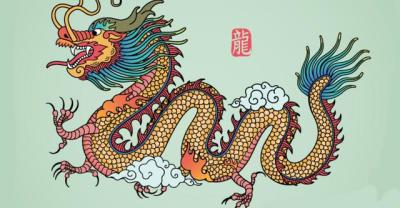
Culture methods and maintenance points of crabapple flower
Crabapple flowers are loved by many literati. Su Shi wrote, "he is only afraid of sleeping late at night, so he burns high candles and shines red makeup." The crabapple flower is a symbol of wealth. Crabapple blossoms are right.
- Next
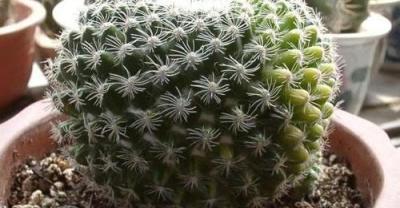
Breeding | about a beautiful African chrysanthemum
Soil gerbera is sensitive to water and should use a medium with good permeability and drainage, preferably a mixture of peat and perlite. The pH value is 5.5-6.0.
Related
- On the eggshell is a badge full of pride. British Poultry Egg Market and Consumer observation
- British study: 72% of Britons are willing to buy native eggs raised by insects
- Guidelines for friendly egg production revised the increase of space in chicken sheds can not be forced to change feathers and lay eggs.
- Risk of delay in customs clearance Australia suspends lobster exports to China
- Pig semen-the Vector of virus Transmission (4)
- Pig semen-the Vector of virus Transmission (3)
- Five common causes of difficult control of classical swine fever in clinic and their countermeasures
- Foot-and-mouth disease is the most effective way to prevent it!
- PED is the number one killer of piglets and has to be guarded against in autumn and winter.
- What is "yellow fat pig"? Have you ever heard the pig collector talk about "yellow fat pig"?

